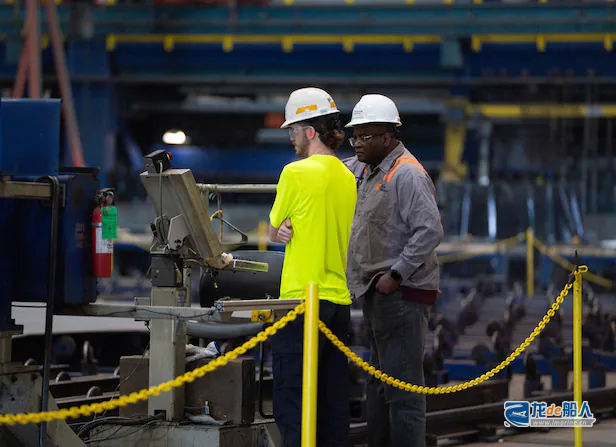The Chosun Ilbo recently reported that the continued expansion of South Korean shipbuilders into the U.S. market is generating both excitement and concern within the industry. Under the earlier South Korea-U.S. shipbuilding cooperation agreement, South Korean shipbuilders are expected to see increased commercial vessel orders and maintenance, repair, and overhaul (MRO) contracts for U.S. Navy vessels. However, given the industry’s past failures in expanding into overseas markets, concerns have emerged within South Korea’s shipbuilding industry.

Major South Korean shipbuilders including Hyundai Heavy Industries, Samsung Heavy Industries, and Hanwha Ocean are actively expanding into the U.S. market.
At the end of last year, Hanwha Group completed its acquisition of Philly Shipyard in the United States and renamed it Hanwha Philly Shipyard, jointly owned by its subsidiaries Hanwha Ocean and Hanwha Systems. HD Hyundai Heavy Industries is collaborating with U.S. private equity firm Cerberus Capital to advance the acquisition of a domestic U.S. shipyard. Although Samsung Heavy Industries has not established a dedicated special vessels division, it has entered into a strategic partnership with U.S.-based Vigor Marine Group to share shipyard modernization and operational technologies.
Currently, all three major South Korean shipbuilders have initiated relevant efforts to advance the Korea-U.S. shipbuilding cooperation project—Make American Shipbuilding Great Again (MASGA)—to support the U.S. in rebuilding its domestic shipbuilding ecosystem.
The United States has set a target to expand its national merchant fleet to 250 vessels by 2034, with the annual market size for naval vessel MRO (Maintenance, Repair, and Overhaul) projected to reach 20 trillion won (approximately $14.6 billion). As Korea-U.S. shipbuilding cooperation intensifies, Korean shipbuilders are poised to secure more orders from the United States. However, due to restrictions imposed by U.S. shipbuilding protection regulations such as the Jones Act, Korean shipbuilders must establish “localized operations” to enter the American market.
However, given the repeated setbacks faced by South Korea’s shipbuilding industry in establishing overseas production bases, some analysts believe that entering the U.S. market carries high risks. In particular, the high labor costs in the United States represent a fundamentally different cost structure compared to other countries South Korea has previously entered.
Taking Hanwha Ocean as an example, the base hourly wage for workers at Hanwha Philly Shipyard is $23.1. Even the lowest-paid apprentices earn over $50,000 annually, with wages adjusted every six months. Therefore, maintaining such a high-wage structure would prove challenging if shipbuilding efficiency cannot be improved or the industry faces an economic downturn.
Looking back at past cases, Samsung Heavy Industries established a shipyard in Brazil’s Suape region after signing a comprehensive cooperation agreement with the ATLANTICO consortium in 2006. Leveraging new orders from Brazilian companies, the shipyard achieved cumulative orders worth approximately 4.5 trillion won.
Soon after, difficulties in transferring shipbuilding technology led to multiple ship delivery delays. Reports also indicated that some completed and delivered tankers returned to port shortly after departure due to list problems caused by poor shipbuilding technology at Brazilian shipyards. Ultimately, Samsung Heavy Industries withdrew from the Brazilian market six years later (in 2012) due to operational difficulties.
Hanwha Ocean (formerly Daewoo Shipbuilding & Marine Engineering, DSME) also faced similar issues. During DSME era, the South Korean shipbuilder established a shipyard in Mangalia, Romania, in 1997. At its peak, the yard held orders valued at $2 billion.
However, difficulties in procuring raw materials and a slump in the shipbuilding industry, which led to a surge in low-priced orders, led to the Romanian shipyard’s financial difficulties. It was eventually acquired by Dutch shipyard Damen Shipyards in 2018. The shipyard is currently facing a crisis, having entered bankruptcy due to a long-term inability to accept new ship orders and the breakdown of its partnership with the Romanian government.
Another mid-sized South Korean shipbuilder, HJ Shipbuilding & Construction (formerly HANJIN Heavy Industries & Construction), has also experienced overseas setbacks. In 2009, then HANJIN Heavy Industries & Construction invested 2 trillion won to establish a shipyard in Subic Bay, Philippines, which it later sold in 2019. Leveraging the low-cost facility in Subic, the company focused on commercial vessel construction, with its order volume once ranking tenth globally. However, it was ultimately unable to withstand the shipbuilding industry downturn that began in 2014 and was forced to sell.
South Korea’s shipbuilding industry believes that a similar trial-and-error process could unfold in the U.S. market. The American shipbuilding ecosystem has deteriorated, with technology transfer posing high risks and a severe shortage of skilled workers. Furthermore, the industry is significantly affected by economic trends; without a steady stream of orders, it will face operational difficulties.
To mitigate risks from market downturns, South Korean companies plan to expand investments in the U.S. through the most conservative approach. Securing sustained orders is crucial for recovering investment profits, so investments will proceed based on the openness of the U.S. naval market.
South Korea’s shipbuilding industry forecasts that the overall market size for U.S. Navy vessels will reach 502 trillion won (approximately $3.7 trillion) by 2034, with South Korean shipbuilders expected to secure orders worth around 21 trillion won (approximately $15.4 billion).
Current projects include small surface combatants, logistics support ships, and combat replenishment vessels. South Korean shipbuilders anticipate that establishing domestic shipyards in the United States will enable expansion into submarines and large combat vessels.


